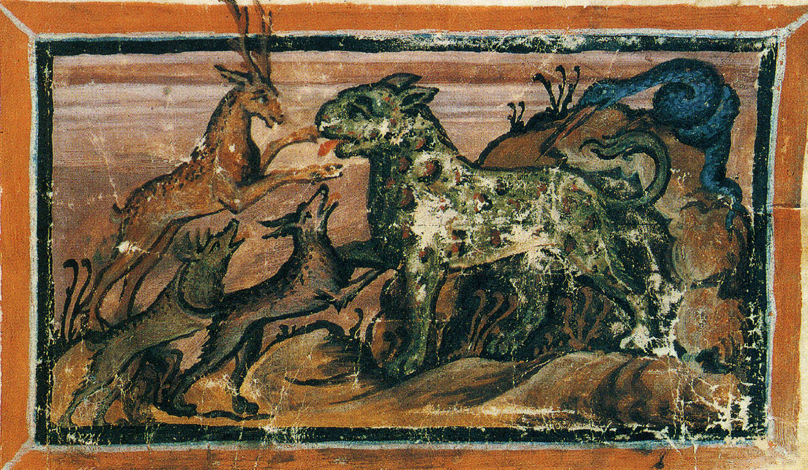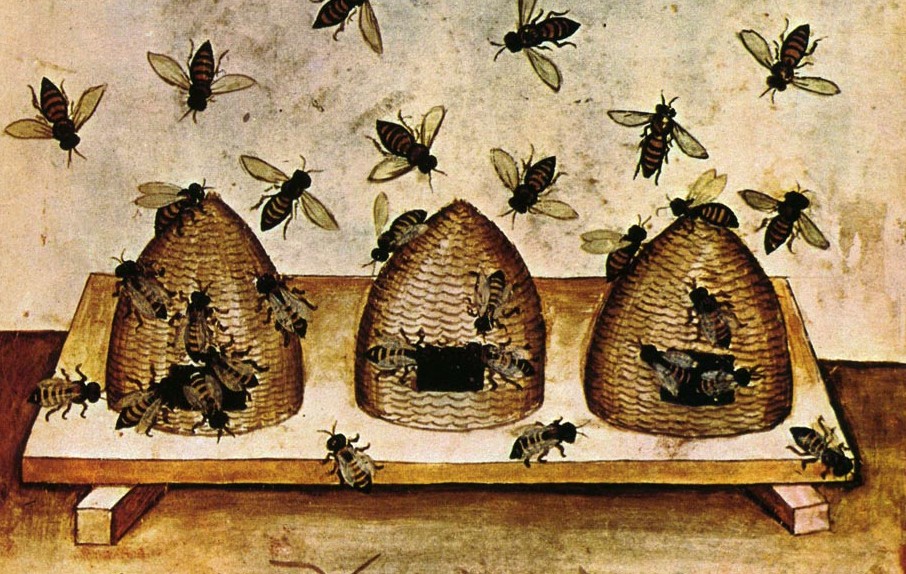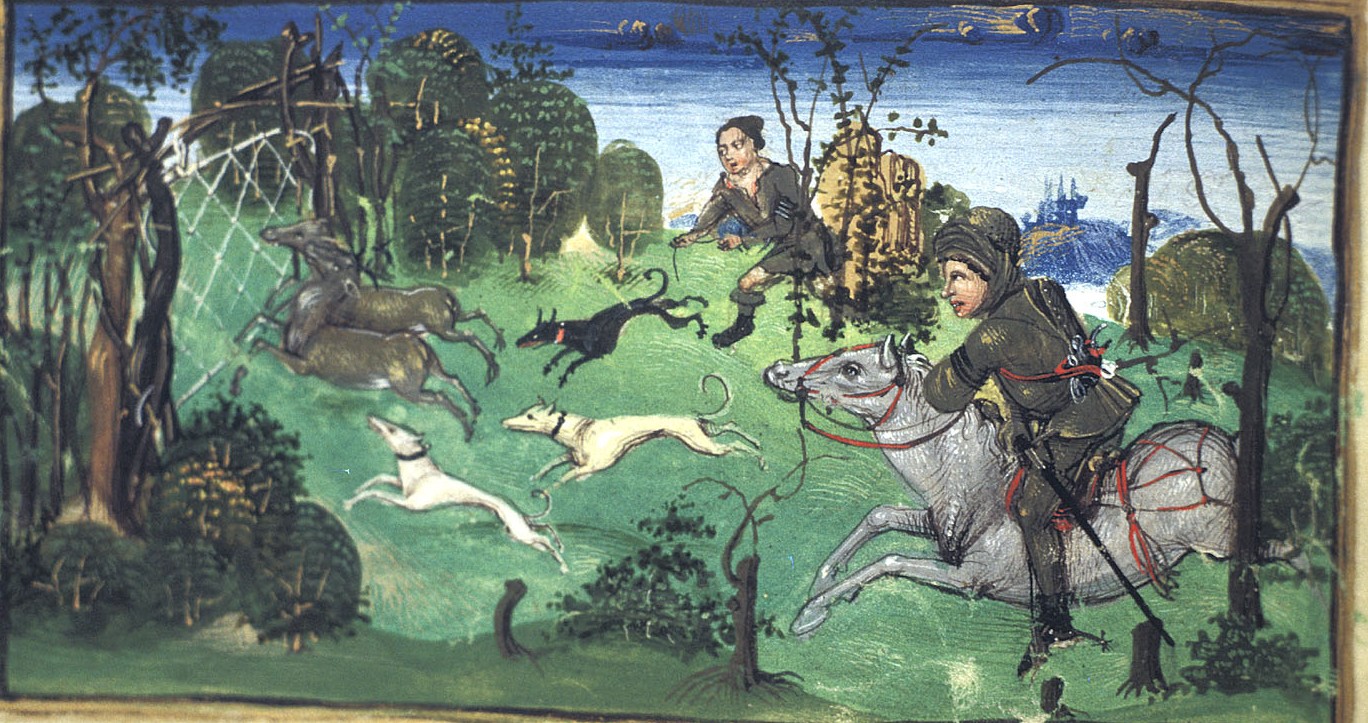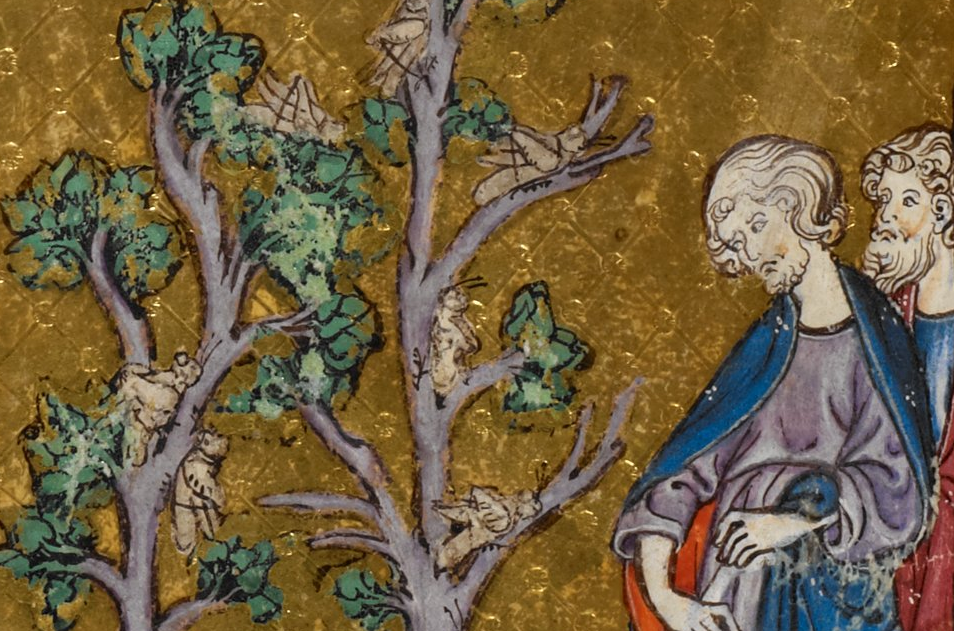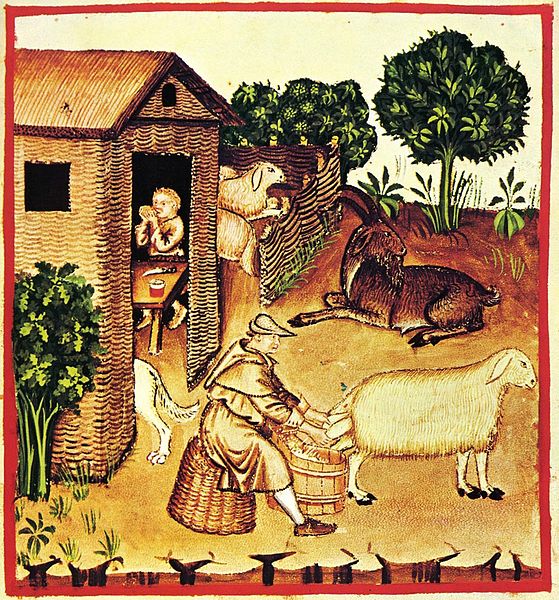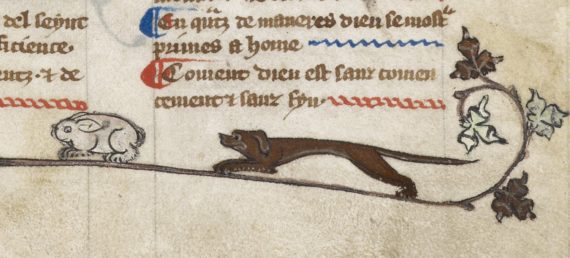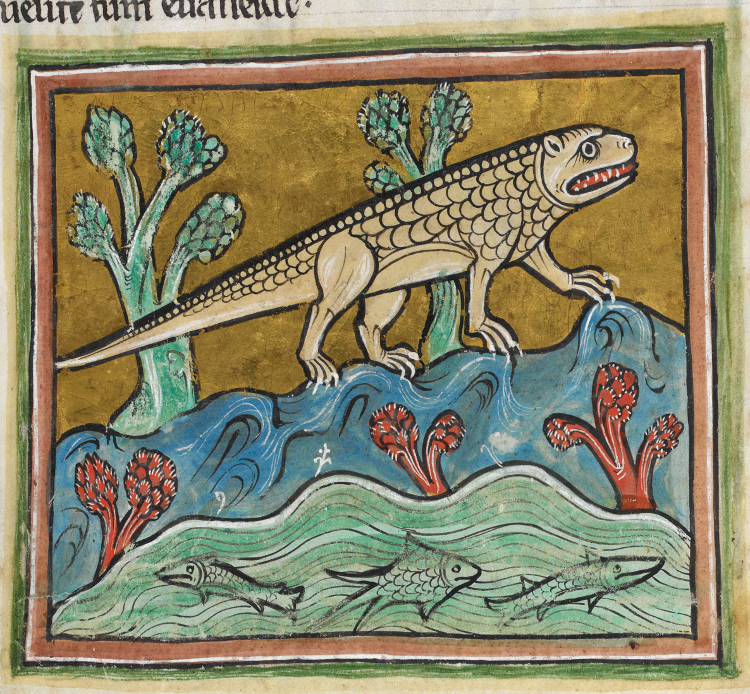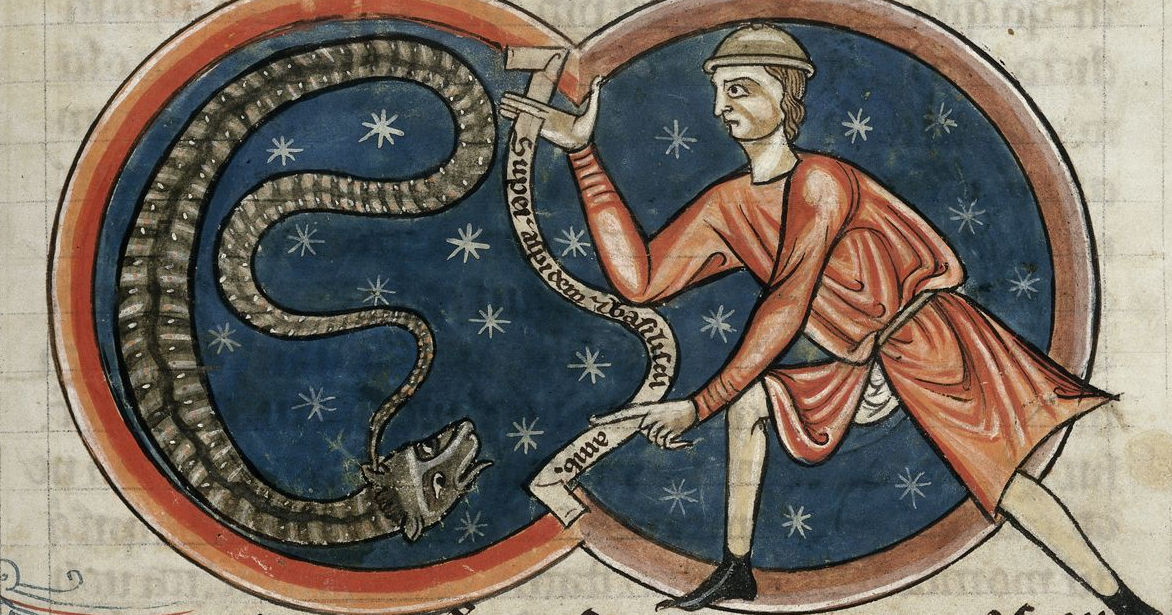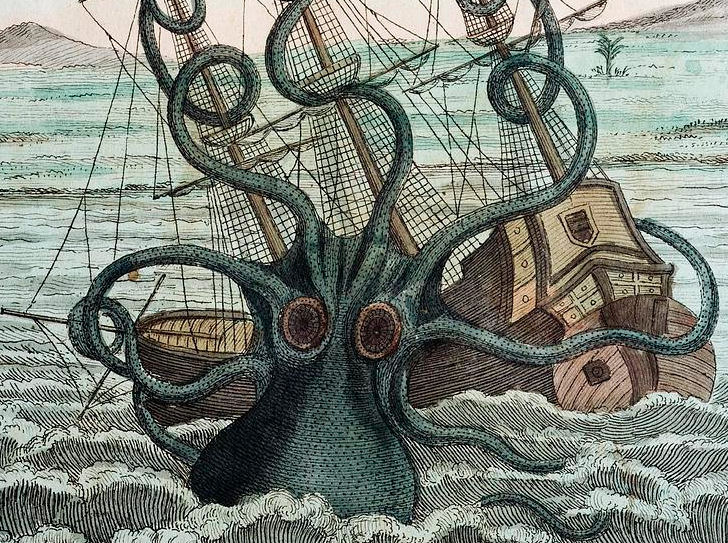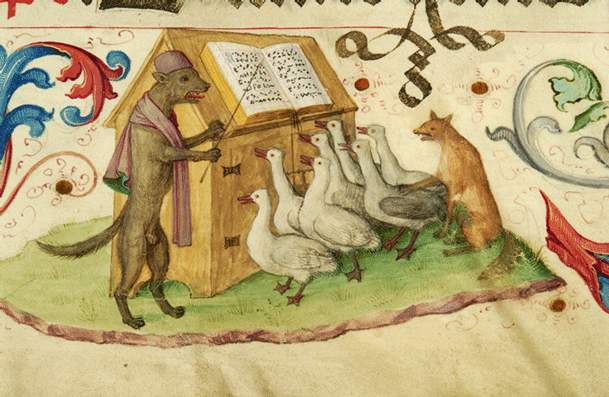Medical Lore in the Bestiaries
Some time in the first part of the Christian era, perhaps as early as the second century, there emerged a curious collection of zoological fables and religious moralizations called Physiologus.
Shrews, Rats, and a Polecat in the ‘Pardoner’s Tale’
The animals of particular interest to us are creatures that function in two distinct ways: as familiar dead metaphors and as familiar live animals.
Old Companions, Noble Steeds: Why dogs and horses were buried at an Early Medieval settlement along the Old Rhine
Excavations at the Early Medieval site of Oegstgeest, located in the Dutch Rhine estuary, have yielded the burials of three horses and three dogs
Pets in the Middle Ages: Evidence from Encyclopedias and Dictionaries
How, then, did people in the High and Late Middle Ages categorize the relationships between people and animals?
‘There Came a Hart in at the Chamber Door’: Medieval Deer as Pets
John of Maidstone paid a visit to Gregory de Rokesle, then mayor of London. With him, he brought some writs from court, which he left on a counter in Gregory’s chamber, presumably for his review, before they were dispatched to Boston and elsewhere. This routine matter was disrupted, however, when a hart (the male red deer), which was in the house, entered the chamber and devoured the writs.
Cat Pics from the Middle Ages
Cat pics existed in the Middle Ages as well.
Medieval Beekeeping
All about bees and beekeeping from the 10th century.
Medieval poaching site discovered in England
Archaeologists working in northern England have uncovered a stone-lined cess pit that was filled with dozens of bones from deer. The evidence suggests that they were dumped here by poachers.
Medieval Pest Control
Have a pest troubling you? In the Middle Ages, you could try these remedies to get rid of them – poisons, traps, or even writing a letter to them!
Human-Bovine Plagues in the Early Middle Ages
In other words, when spreading among cattle, a now-extinct morbillivirus episodically colonized and spread in human populations during the early Middle Ages.
Study reveals size of livestock were at their lowest in Early Middle Ages
A new study, covering the last 2000 years of livestock animals such as cattle, pigs, sheep and goats, has revealed that in Spain these animals were at their smallest size during the 8th and 9th centuries.
What was it like to be a Cow? History and Animal Studies
This essay outlines where the history of animals is now, and suggests where it and the historiographical issues raised by the inclusion of animals in a study of the past might go in the future.
Local and Traditional on the Millennial Scale: Sustainable Waterfowl Management from Viking Age Iceland
Inhabited by Vikings since approximately 600 AD, the islands hosts an abundant, but terribly fragile resource, puffins, flightless birds that nest on rocky exposed cliffs, in easy range of the islanders other prime food source, pigs.
Medieval Horse Stable: The Results of Multi Proxy Interdisciplinary Research
A multi proxy approach was applied in the reconstruction of the architecture of Medieval horse stable architecture, the maintenance practices associated with that structure as well as horse alimentation at the beginning of 13th century in Central Europe.
Reality x Fiction: The Image of the Tiger in the Bestiaries of Medieval England
The present article intends to make an analysis of the way that how the tiger, an animal native from Asia, was represented in the bestiaries of the Medieval English literature (XIIth to XVth centuries), in a time that the European knowledge about Asia still was very loose.
Sea Monsters on Medieval and Renaissance Maps
Chet Van Duzer, author of the recent book Sea Monsters on Medieval and Renaissance Maps, will trace the history of sea monsters on European maps, beginning with the earliest mappaemundi on which they appear in the tenth century and continuing to the end of the sixteenth century.
Tropical fire ants traveled the world on 16th century ships
Thanks to a bit of genetic sleuthing, researchers now know the invasion history of the tropical fire ant, the first ant species known to travel the globe by sea.
The Hare and its Alter Ego in the Middle Ages
This article deals with the topic of hares and rabbits in Creation scenes and Naming of the beasts scenes in bestiaries and other medieval manuscripts.
Can You Guess Which Animal This Is?
Here are 25 images of animals from the Middle Ages – can you figure out which creature they are?
Ten Strange Medieval Animals You Might Not Have Heard Of
A fish that can stop a ship and a bull that passes gas to defend itself – these and more strange animals from the Middle Ages!
Mermaids in the Middle Ages
Florentine writer Brunetto Lattini explains what mermaids are in his Book of Treasures.
Toxicology and Treatment: Medical Authorities and Snake-bite in the Middle Ages
By end of the thirteenth century, surgeons and university-trained physicians in Western Europe had a plethora of authorities from the Greco-Roman and Arabic tradition from which to consult for the treatment of snake-bites.
The Kraken: when myth encounters science
Hundreds of years ago, sailors were terrified by the Kraken, a dreadful sea monster capable of sinking ships and with a taste for human flesh.
The Sounds that Animals Make – the Medieval Version
It seems that every parent at one time or another teaches their children the sounds that animals make. They did it in the Middle Ages too.
Animals in the Middle Ages: The Monkey
‘Monkeys are animals that like to imitate everything they see men doing. They feel happy when there is new moon, and with the full and waning moon, they get sad and filled with melancholy.’
